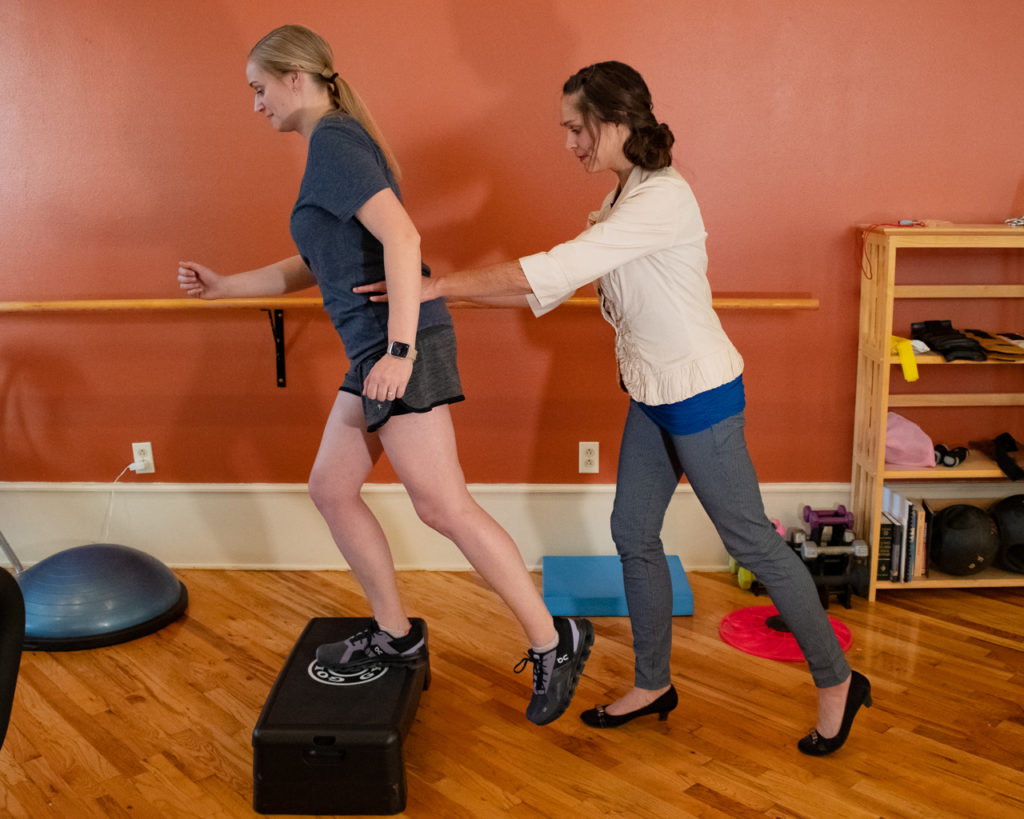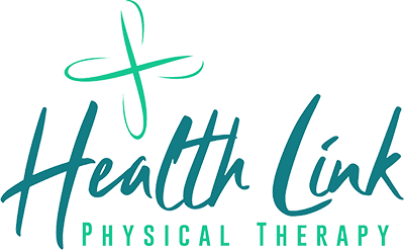Chronic Pain:
Chronic pain is persistent discomfort that lasts for an extended period, typically beyond the expected healing time (often lasting for months or years). It can result from various conditions, such as arthritis, nerve damage, or injuries. Chronic pain can impact daily life and mental well-being.
Physical therapy is a non-invasive approach aimed at managing and reducing chronic pain. We at Health Link Physical Therapy employ gentle but effective techniques like: exercises, stretches, and manual therapies such as Strain Counterstrain to improve mobility, strength, and flexibility. These proven techniques help with many chronic pain conditions. Are you living in pain? Why not try physical therapy?
References:
- Geneen LJ, Moore RA, Clarke C, Martin D, Colvin LA, Smith BH. Physical activity and exercise for chronic pain in adults: an overview of Cochrane Reviews. Cochrane Database Syst Rev. 2017;1(1):CD011279.
- Qaseem A, Wilt TJ, McLean RM, Forciea MA; Clinical Guidelines Committee of the American College of Physicians. Noninvasive treatments for acute, subacute, and chronic low back pain: a clinical practice guideline from the American College of Physicians. Ann Intern Med. 2017;166(7):514-530.

Sciatica and Low Back Pain:
Low back pain and sciatica are common musculoskeletal conditions that can significantly impact an individual’s quality of life. Low back pain refers to discomfort in the lower region of the spine, while sciatica involves pain, numbness, or tingling radiating down the leg due to compression or irritation of the sciatic nerve.
Physical therapy is a widely recommended and effective approach for managing low back pain and sciatica. Therapists focus on addressing underlying causes, improving flexibility, strength, and posture, and providing education on pain management techniques. Exercise programs tailored to individual needs play a crucial role in enhancing mobility and reducing pain. Are you struggling with low back pain? Health Link Physical Therapy can help.
References:
- Chou R, Deyo R, Friedly J, et al. Nonpharmacologic Therapies for Low Back Pain: A Systematic Review for an American College of Physicians Clinical Practice Guideline. Ann Intern Med. 2017;166(7):493-505.
- Steffens D, Maher CG, Pereira LS, et al. Prevention of Low Back Pain: A Systematic Review and Meta-analysis. JAMA Intern Med. 2016;176(2):199-208.
- Hayden JA, van Tulder MW, Malmivaara A, Koes BW. Exercise therapy for treatment of non-specific low back pain. Cochrane Database Syst Rev. 2005;(3):CD000335.
Neck Pain:
Neck pain is a common condition that can result from various causes, including; motor vehicle accidents (MVA), poor posture, muscle strain, injury, or underlying medical conditions. It often leads to discomfort, stiffness, and limited range of motion in the neck.
Physical therapy is a recommended approach for managing neck pain, focusing on addressing the underlying factors contributing to discomfort. Here at Health Link Physical Therapy we use techniques such as manual therapy, Strain Counterstrain, stretching exercises, and strengthening exercises to improve neck muscle function and reduce pain. Additionally, we provide guidance on posture correction, ergonomic considerations, and self-management strategies to prevent recurrent neck pain. Want to get back to feeling better? Try Health Link for your neck pain needs.

References:
- Gross AR, Paquin JP, Dupont G, et al. Exercises for mechanical neck disorders: A Cochrane review update. Man Ther. 2016;24:25-45.
- Kay TM, Gross A, Goldsmith CH, et al. Exercises for mechanical neck disorders. Cochrane Database Syst Rev. 2005;(3):CD004250.
- Jull G, Moore A. The craniocervical connection: a retrospective analysis of 300 whiplash patients with cervical and temporomandibular disorders. Aust J Physiother. 2007;53(2):127-137.
Headaches:
Headaches can be nagging and even debilitating. Migraines to ocular (eye) pain are common conditions characterized by pain or discomfort in the head or neck region. Factors contributing to headaches include muscle tension, poor posture, and stress.
Physical therapy offers a non-pharmacological (non-drug) approach to managing headaches by addressing musculoskeletal factors. Here at Health Link Physical Therapy we use techniques like manual therapy, Strain Counterstrain, stretching exercises, and posture correction to alleviate muscle tension and improve cervical spine function. Additionally, we provide education on lifestyle modifications and relaxation techniques to help prevent and manage headaches. Is your headache a pain in the neck? Call us today to see if we can help.
References:
- Bryans R, Descarreaux M, Duranleau M, Marcoux H, Potter B, Ruegg R. Evidence-based guidelines for the chiropractic treatment of adults with headache. J Manipulative Physiol Ther. 2011;34(5):274-289.
- Fernández-de-Las-Peñas C, Alonso-Blanco C, Cuadrado ML, Miangolarra JC, Barriga FJ, Pareja JA. Are manual therapies effective in reducing pain from tension-type headache?: a systematic review. Clin J Pain. 2006;22(3):278-285.
- Jull G, Moore A. The craniocervical connection: a retrospective analysis of 300 whiplash patients with cervical and temporomandibular disorders. Aust J Physiother. 2007;53(2):127-137.
TMJ:
Temporomandibular joint (TMJ) dysfunction involves pain and discomfort in the jaw joint and the surrounding muscles. It can result from various factors, including jaw misalignment, muscle tension, or trauma. Symptoms may include jaw pain, clicking or popping sounds, and difficulty in opening or closing the mouth.
Physical therapy is a valuable approach for managing TMJ dysfunction. Here at Health Link we use techniques such as Strain Counterstrain, manual therapy, exercises, and stretches to improve jaw mobility, reduce muscle tension, and address contributing factors. Additionally, we provide education on proper jaw posture, relaxation techniques, and lifestyle modifications to alleviate symptoms and prevent recurrence. Having troubles with your jaw? Why not try Health Link Physical Therapy for relief?
References:
- Michelotti A, Cioffi I, Festa P, Scala G, Farella M. Oral parafunctions as risk factors for diagnostic TMD subgroups. J Oral Rehabil. 2010;37(3):157-162.
- Greene CS. Managing TMD: what you should know. J Am Dent Assoc. 2010;141(3):278-280.
- Craane B, Dijkstra PU, Stappaerts K, De Laat A. Randomized controlled trial on physical therapy for TMJ closed lock. J Dent Res. 2012;91(4):364-369.

Lymphedema:
Lymphedema is a chronic condition characterized by the accumulation of excess lymphatic fluid, leading to swelling, usually in the arms or legs. Lymph can also pool on internal organs. It often occurs as a result of damage to the lymphatic system, such as during cancer treatment involving lymph node removal or radiation therapy.
Here at Health Link Physical Therapy we utilize manual lymphatic drainage which involves gentle massage techniques to encourage the flow of lymphatic fluid. Exercise aims to improve muscle function and promote lymphatic circulation. This approach can effectively reduce swelling, improve function, and enhance the overall quality of life for individuals with lymphedema.
References:
- Stout NL, Pfalzer LA, Springer B, et al. Breast cancer-related lymphedema: comparing direct costs of a prospective surveillance model and a traditional model of care. Phys Ther. 2012;92(1):152-163.
- Ezzo J, Manheimer E, McNeely ML, Howell DM, Weiss R, Johansson KI, Bao T, Bily L, Tuppo CM, Williams AF, Karadibak D. Manual lymphatic drainage for lymphedema following breast cancer treatment. Cochrane Database Syst Rev. 2015;(5):CD003475.
- Jeffs E, Ream E, Shewbridge A, Cowan-Dickie S, Crawshaw D, Hurlow A. Exploring patient perceptions of the diagnostic process for lymphoma: a qualitative study. Eur J Oncol Nurs. 2012;16(1):34-41.
Fibromyalgia:
Fibromyalgia is a chronic condition characterized by widespread musculoskeletal pain, fatigue, sleep disturbances, and tenderness at specific points on the body. It often coexists with other symptoms like headaches and cognitive difficulties. The exact cause of fibromyalgia is unknown, and its management typically involves a multidisciplinary approach.
Physical therapy plays a crucial role in the management of fibromyalgia. We focus on improving flexibility, strength, and endurance through tailored exercise programs. Additionally, we incorporate techniques such as Strain Counterstrain and other manual therapies to address pain and improve function. Education on energy conservation, stress management, and sleep hygiene is also an integral part of physical therapy for fibromyalgia. Are you suffering with fibromyalgia? Why not try Health Link Physical Therapy for relief?
References:
- Häuser W, Thieme K, Turk DC. Guidelines on the management of fibromyalgia syndrome – a systematic review. Eur J Pain. 2010;14(1):5-10.
- Busch AJ, Webber SC, Brachaniec M, et al. Exercise therapy for fibromyalgia. Curr Pain Headache Rep. 2011;15(5):358-367.
- Goldenberg DL, Burckhardt C, Crofford L. Management of fibromyalgia syndrome. JAMA. 2004;292(19):2388-2395.

Running Analysis
Joint Replacement
Sports Injuries
Overuse Injuries

Auto and ATV accidents:
Automobile and ATV (All-Terrain Vehicle) accidents can result in a range of injuries, including musculoskeletal injuries like whiplash, fractures, soft tissue injuries, and neurological damage. Physical therapy plays a crucial role in the rehabilitation process for individuals recovering from these accidents.
Physical therapists assess the extent of injuries, design personalized rehabilitation programs, and work towards restoring mobility, strength, and function. Treatment may include therapeutic exercises, manual therapy, and modalities to manage pain and reduce inflammation. Additionally, physical therapy addresses issues such as postural dysfunction and helps individuals regain independence in daily activities. Have you gotten into an accident?
References:
- Thomas AC, Wojda TR, Cox-Martin MG, et al. Rehabilitation of the injured combatant: Part II – orthopedic injuries. Mil Med Res. 2016;3:29.
- Sterling M, Hendrikz J, Kenardy J, Kristjansson E, Dumas JP, Niere K, Cote J. Assessment and validation of prognostic models for poor functional recovery 12 months after whiplash injury: a multicentre inception cohort study. Pain. 2012;153(8):1727-1734.
- Haneline MT, Rosner AL. The etiology of cervical artery dissection. J Chiropr Med. 2007;6(3):110-120.
Prehab – Before surgery
Work Related Injuries
Sprained Ankles
Foot and Ankle Pain
Knee Pain
Hip Pain
Arthritis
Multiple Sclerosis, EDS, and Others

